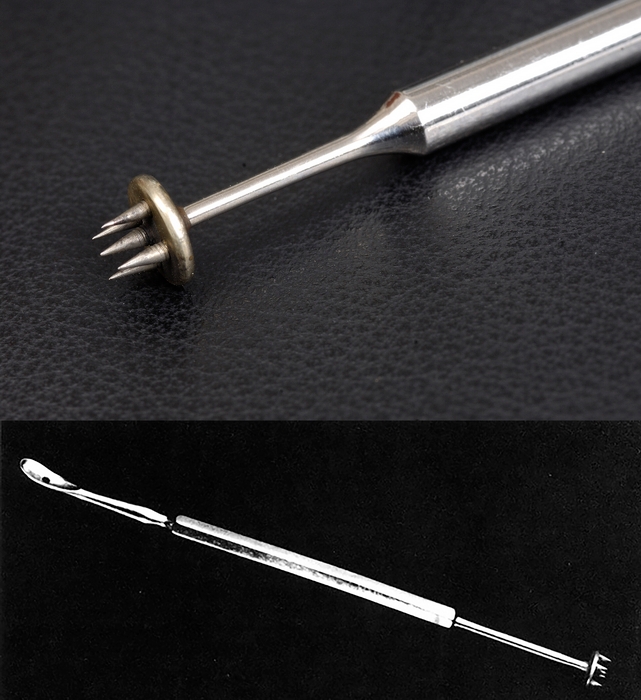
Photo credit: Top: Johns Hopkins Univ, n/a; bottom: n/a
Source: DA Henderson
India/Pakistan
The rotary lancet (invented in the UK around 1871) was used primarily in India and Pakistan. The spiked disc was rotated against the skin to make a shallow cut. Vaccine was applied to the skin and gently rubbed in with the small spoon. The central spike was longer than the surrounding spikes to ensure that the instrument remained in place. Four insertions were frequently made, usually on the wrist or forearm.
The vaccinator was intended to make only a shallow cut with little or no bleeding, and some lancets had spikes only about 1/16" long. In practice, some vaccinators made deeper cuts and bacterial infection could occur. In 1964, WHO recommended that the rotary lancet not be used. Smallpox eradication program teams confiscated lancets when found, but they remained in use as late as 1974.